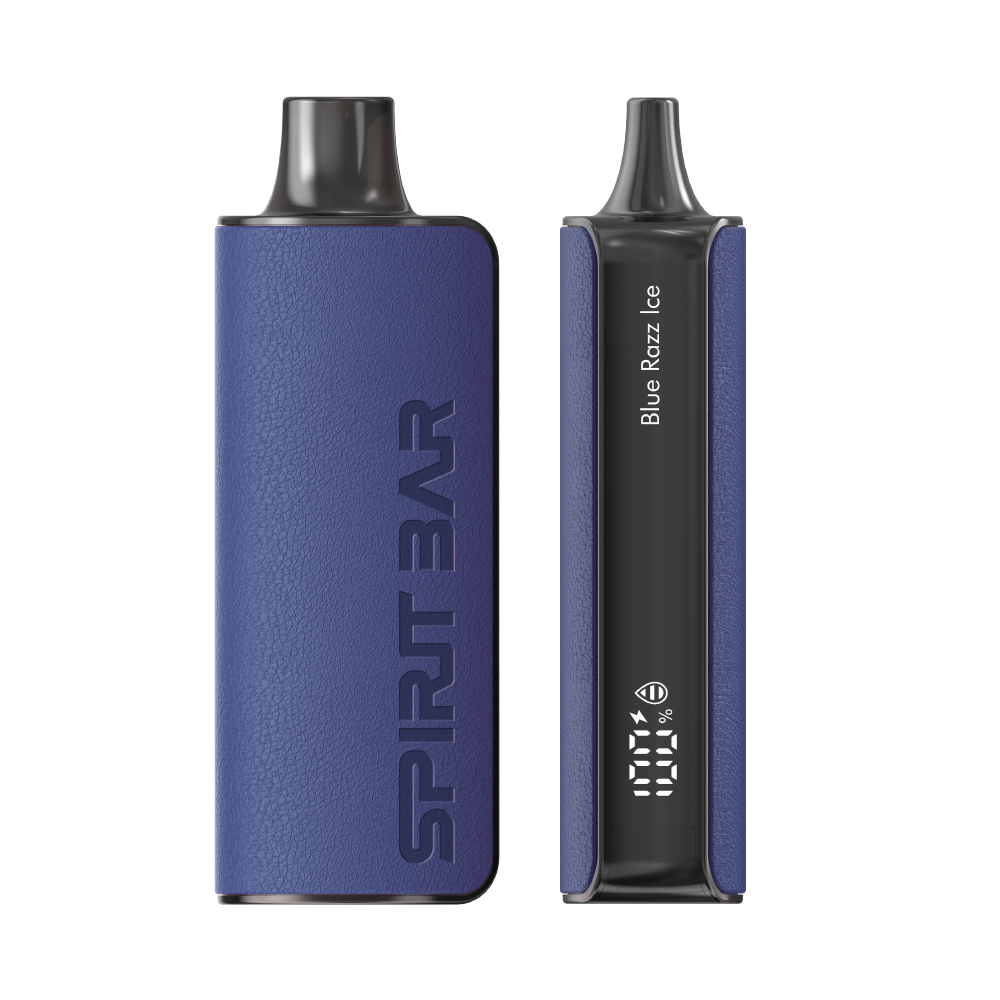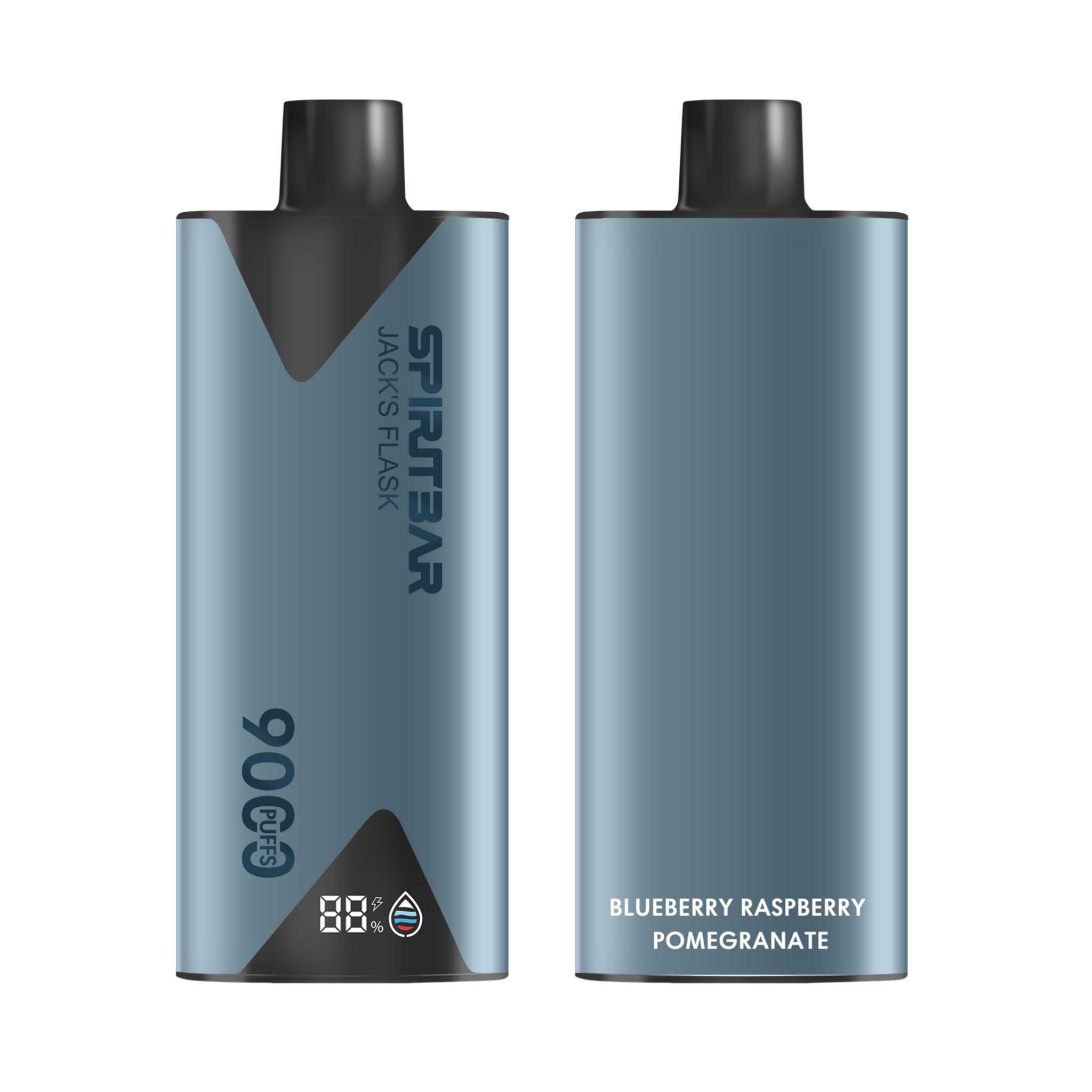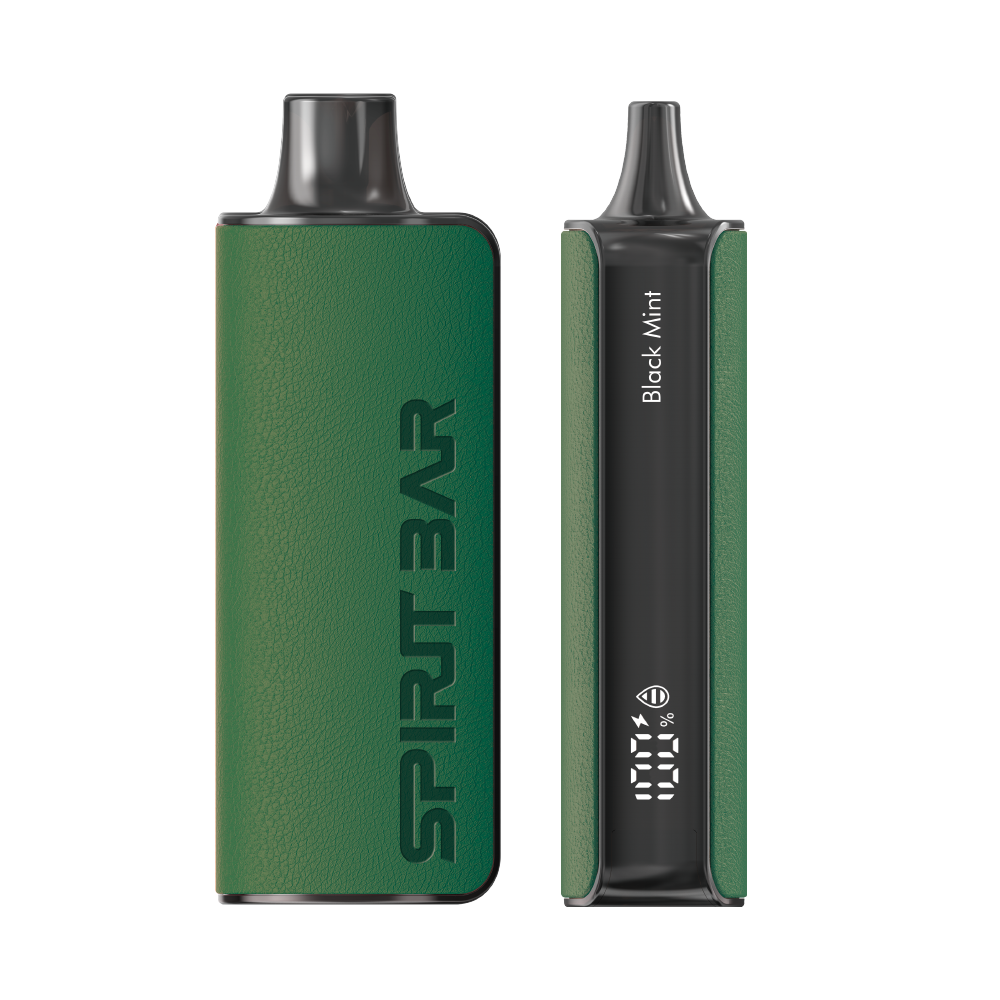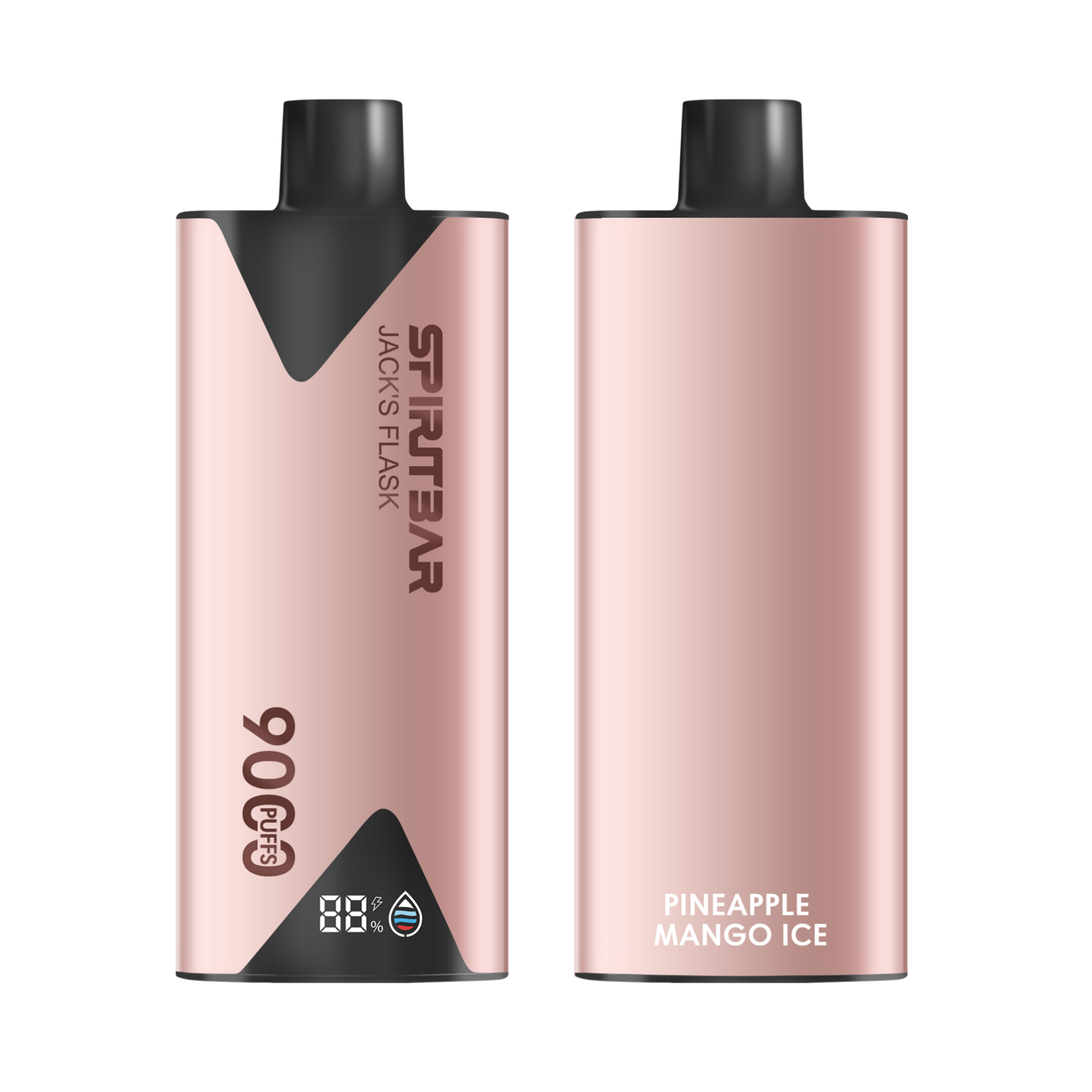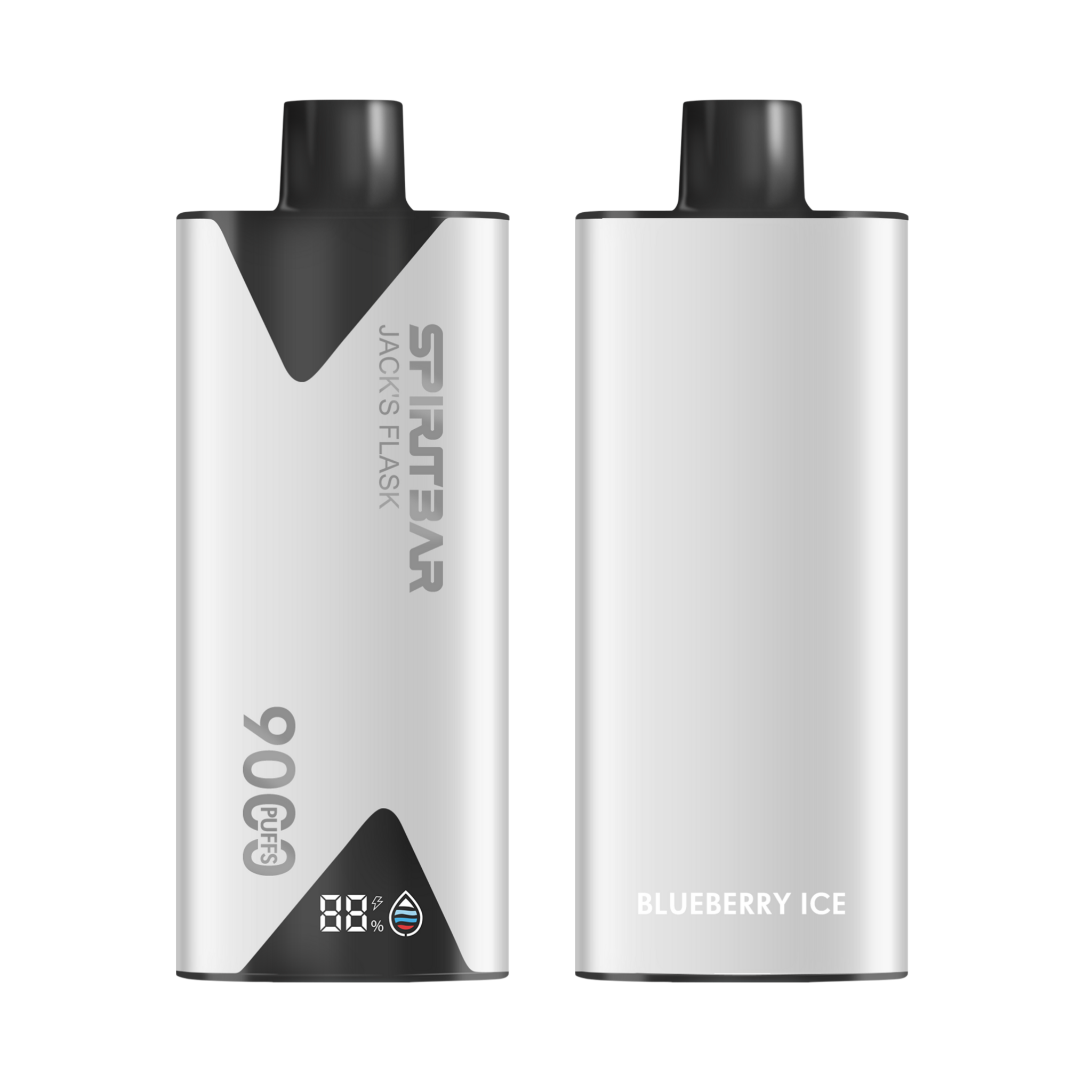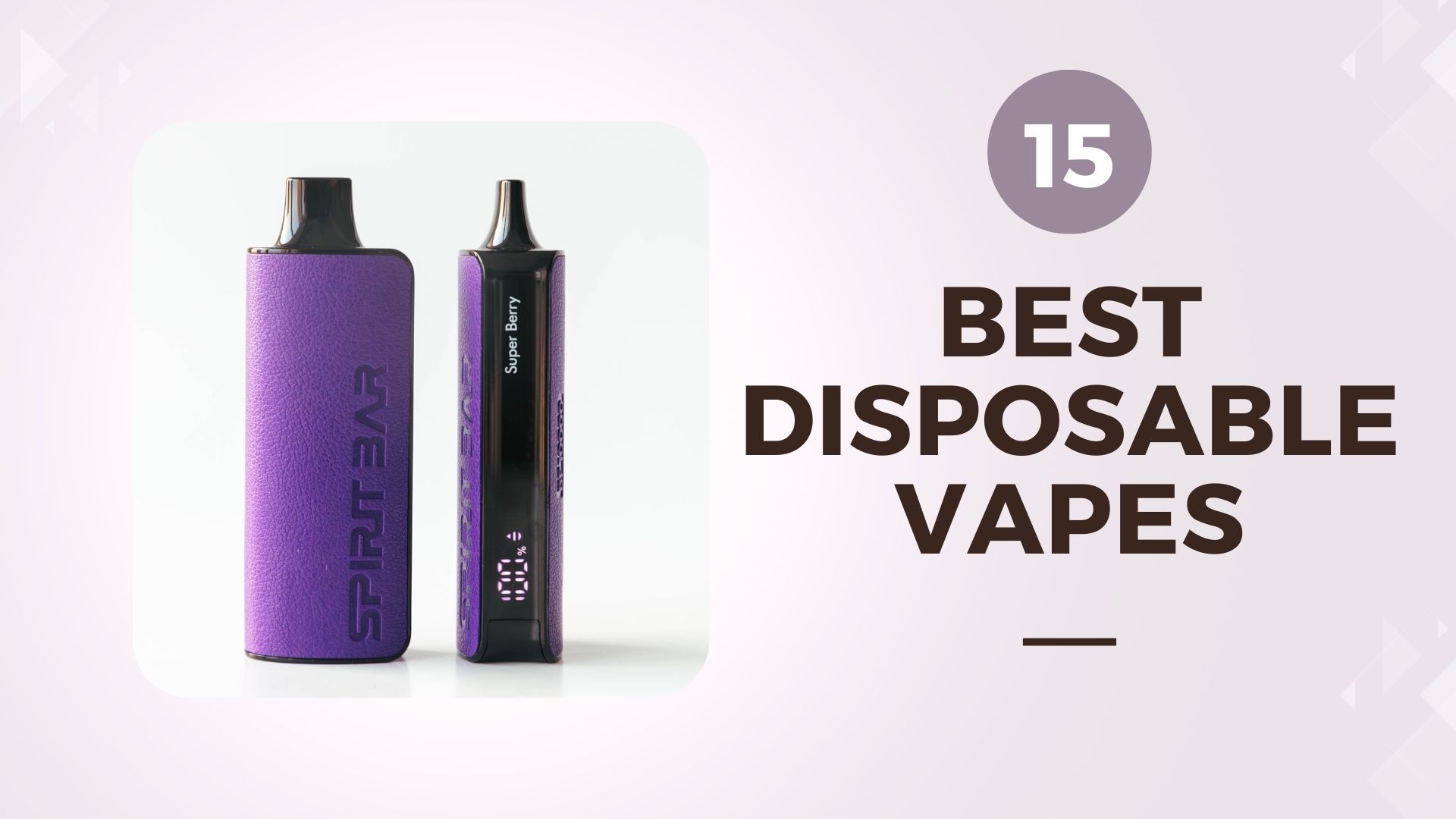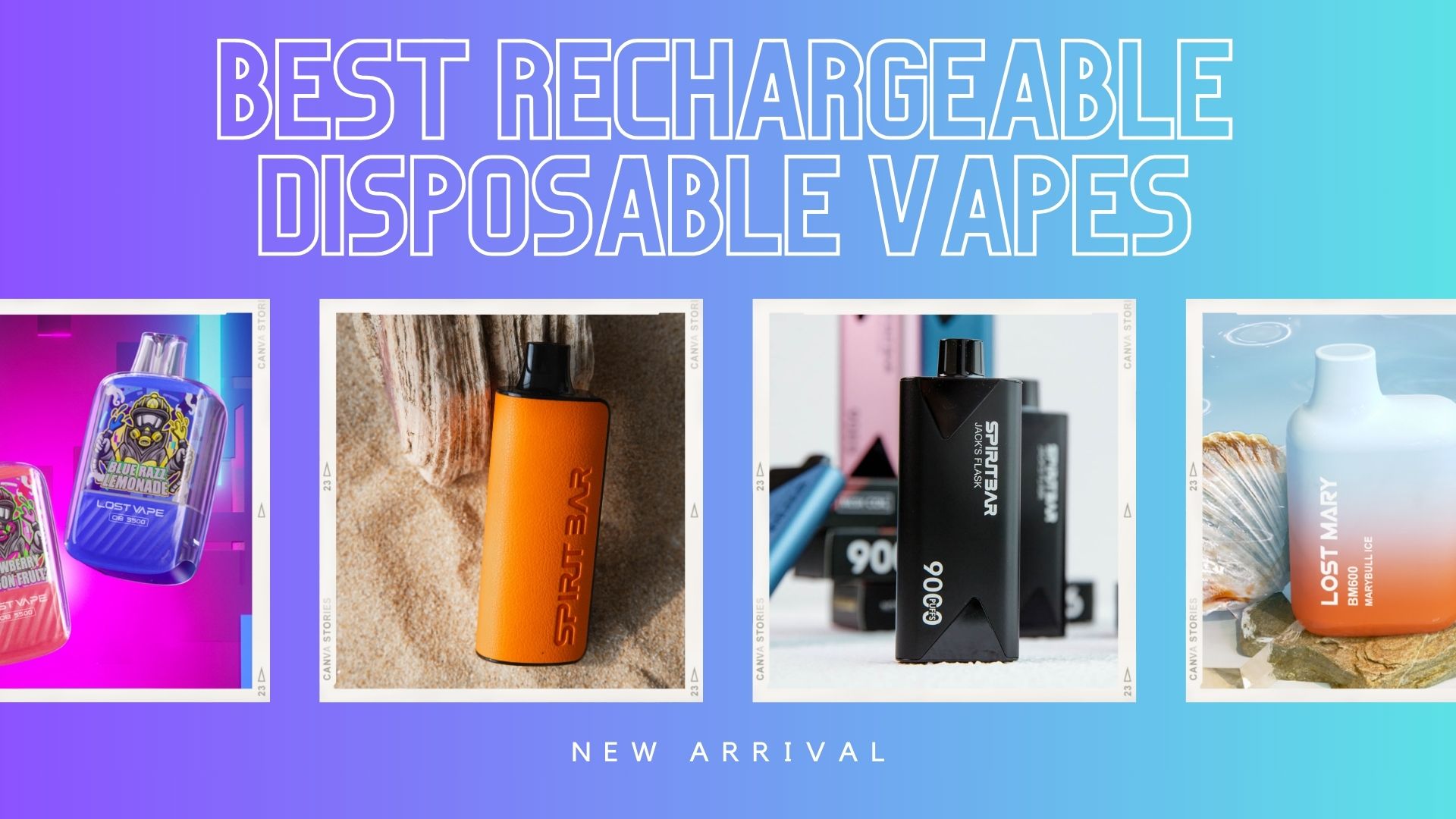Understanding Vape Pen Composition
The Basic Structure of Vape Pens
When you delve into the world of vaping, understanding the basic structure of vape pens is crucial. At the heart of your vape pen is a sophisticated electronic system designed to deliver vapor efficiently. The main components include a mouthpiece, also known as a drip tip, which is where you draw the vapor from. Below the mouthpiece is the cartridge or tank, the liquid storage area where the e-juice is held.
The heating element, commonly referred to as the atomizer, is responsible for heating the e-liquid to create vapor. This process is controlled by a microprocessor, which ensures the right temperature is maintained for optimal vaporization. The power source of the vape pen is a rechargeable battery, which is a critical component as it dictates the device’s longevity and performance.
It’s important to recognize that the quality and design of these components can significantly affect your vaping experience.
Understanding these components will not only enhance your vaping experience but also enable you to make informed choices about the materials and construction of the vape pens you choose to use.
Materials Used in Vape Pen Construction
When you stroll into a vape shop, the variety of vape pens on display can be overwhelming. However, understanding the materials that go into their construction can help you make an informed choice. Most vape pens are composed of a combination of metals, plastics, and rubber components. These materials are chosen for their durability, electrical conductivity, and ability to withstand high temperatures.
The main body of a vape pen is typically made from stainless steel or aluminum, providing a sturdy frame that houses the internal components. For the heating element, metals such as nickel, chromium, and kanthal are commonly used due to their high resistance and heat tolerance. The mouthpiece might be constructed from plastics like Delrin or rubber to offer a comfortable user experience.
It’s crucial to consider the quality of materials when selecting a vape pen, as this can affect both performance and safety.
While the exterior design catches your eye, the internal build determines the longevity and reliability of your device. By familiarizing yourself with the common materials, you can better assess the value and safety of the vape pens you’re considering.
$36 $12.99 (Free Shipping, 2-6 Days Delivery)
- Up to 10000 Puffs
- E-liquid & Power Screen Display
- Mesh Coil
- 2-6 days delivery
Common Metals Found in Vape Pens
When you’re exploring the world of vaping, it’s important to understand the materials that make up the devices you use. Vape pens often contain a variety of metals that serve different functions, from heating elements to structural components. The most common metals found in vape pens include stainless steel, nickel, chromium, and sometimes even traces of lead.
Stainless steel is prized for its durability and resistance to corrosion, making it a staple in the construction of vape pen bodies and mouthpieces. Nickel and chromium are frequently used in the coils that heat the e-liquid due to their high resistance and ability to withstand repeated temperature changes.
- Stainless Steel: Body, mouthpiece
- Nickel-Chromium Alloys: Coils, heating elements
- Lead: Solder, connections (in some cases)
While the presence of metals like lead can be concerning, it’s typically found in very small amounts. However, it’s crucial to choose products from reputable manufacturers to minimize potential health risks.
Remember, the quality of the metal can significantly impact your vaping experience and safety. Leaf Life Smoke Shop in downtown Portland offers a variety of smoking products, including vape juices and accessories. The website provides guides and tips on vaping, which can help you make informed decisions about the materials in your vape pen.
Health and Safety Concerns
Potential Risks Associated with Metals
When you consider the sleek design of your vape pen, it’s easy to overlook the potential risks lurking within. Heavy metal toxicity is a serious concern, particularly when metals like mercury are involved. These metals can interfere with the body’s normal functions, leading to a range of health issues.
$36 $12.99 (Free Shipping, 2-6 Days Delivery)
- Up to 9000 Puffs
- Stylish pirate flask-shaped metal body
- E-liquid & Power Screen Display
- 2-6 days delivery
Mercury, for example, hinders the production of normal neurochemicals, which can have profound effects on mental health. But mercury isn’t the only metal to be wary of. Here’s a quick rundown of common metals found in vape pens and their potential risks:
- Nickel: Can cause allergic reactions and respiratory problems.
- Chromium: Linked to lung cancer when inhaled in high amounts.
- Lead: Affects the nervous system and can cause cognitive impairments.
- Cadmium: Known to cause kidney damage and bone fragility.
It’s crucial to be aware of these risks, as the cumulative effect of inhaling even minute quantities over time can be detrimental to your health. Manufacturers are responsible for ensuring the safety of these devices, but as a user, staying informed is your best defense.
Regulations and Standards for Vape Pen Materials
When you’re considering the safety of vape pens, it’s crucial to understand the regulatory landscape that governs their materials. The Food and Drug Administration (FDA) plays a pivotal role in this regard, offering an overview of regulations for e-cigarettes, vapes, and other electronic nicotine delivery systems. These regulations are designed to ensure that the materials used are safe for consumers.
The FDA’s oversight extends to the metals used in vape pens, which are subject to specific standards to minimize potential health risks. For instance, certain metals that could leach into aerosols and be inhaled are closely monitored. Here’s a quick rundown of the regulatory framework:
- Pre-market review: Manufacturers must submit their products for FDA review before they can be sold.
- Ingredient disclosure: Companies are required to disclose the materials used in their vape pens.
- Quality standards: There are established limits for certain harmful substances.
It’s important for you to be aware that while regulations exist, the onus is still on manufacturers to comply and on consumers to stay informed about the products they use.
Remember, staying informed about the current use and regulatory status of vape pens can help you make safer choices when it comes to vaping.
$36 $12.99 (Free Shipping, 2-6 Days Delivery)
- Up to 10000 Puffs
- E-liquid & Power Screen Display
- Mesh Coil
- 2-6 days delivery
Research on Metal Inhalation from Vaping
As you delve deeper into the world of vaping, it’s crucial to understand the implications of inhaling metals. Research indicates that certain metals can be aerosolized during the vaping process, leading to potential health risks. The primary metals of concern include nickel, chromium, and lead, which can be released from the heating coils of vape pens.
Studies have shown that the temperature at which a vape pen operates can affect the concentration of metals in the aerosol. Here’s a simplified breakdown of the findings:
- Lower temperatures generally result in less metal emission.
- Higher temperatures can increase the release of metals.
- The age and condition of the vape pen also play a role in metal release.
It’s important to consider the long-term effects of metal inhalation, as the cumulative exposure could pose significant health risks over time.
Manufacturers are continuously researching and improving the materials used in vape pens to minimize these risks. As a user, staying informed about the latest findings and choosing products from reputable sources can help mitigate the potential dangers associated with metal inhalation from vaping.
Types of Metals in Vape Pens
Stainless Steel Components
When you’re considering the durability and safety of your vape pen, the type of metal used is paramount. 316L stainless steel stands out as the material of choice for high-quality vape pens. Known for its corrosion resistance and mechanical strength, this low-carbon variant of stainless steel is particularly favored for its longevity and ability to maintain purity of the vapor.
$36 $12.99 (Free Shipping, 2-6 Days Delivery)
- Up to 9000 Puffs
- Stylish pirate flask-shaped metal body
- E-liquid & Power Screen Display
- 2-6 days delivery
The use of 316L stainless steel in vape pens ensures that your device can withstand the high temperatures and acidic e-juices without compromising the integrity of the metal.
Stainless steel components are not only about durability but also about the aesthetics and feel of the vape pen. A sleek, stainless steel finish gives a premium touch to the device, making it a popular choice among discerning users. Here’s a quick look at why stainless steel is preferred:
- Resistant to corrosion and oxidation
- Capable of enduring high temperatures
- Non-reactive with e-juice flavors
- Provides a sleek, modern appearance
- Easy to clean and maintain
Nickel and Chromium Alloys
In the realm of vape pen construction, nickel and chromium alloys are commonly utilized for their resilience to high temperatures and corrosion resistance. These alloys, often found in the heating elements, are crucial for ensuring a consistent vaporization process. Nickel, in particular, is prized for its thermal conductivity, which aids in efficient heat distribution.
Nickel-chromium alloys, also known as Nichrome, are especially popular in vape coils due to their durability and stable performance. However, it’s important to be aware of the potential for nickel allergies, which can be exacerbated by exposure to nickel in vapor form.
- Resistance to high temperatures
- Corrosion-resistant properties
- Good thermal conductivity
- Potential for allergic reactions
While the use of these metals is widespread, it’s essential to consider individual sensitivities and opt for vape pens that prioritize user safety and material quality.
Copper and Brass Elements
While exploring the inner workings of vape pens, you’ll often encounter components made from copper and brass. These metals are favored for their excellent conductivity and durability. Copper, in particular, is commonly used in the construction of coils due to its superior ability to conduct electricity. This ensures that the heat is efficiently transferred to the e-liquid, creating the vapor you inhale.
Brass, an alloy of copper and zinc, is also utilized in various parts of the vape pen, including the connectors and mouthpieces. Its resilience and machinability make it a practical choice for manufacturers. However, it’s important to be aware of the potential for brass components to contain trace amounts of lead, which can raise health concerns.
$36 $12.99 (Free Shipping, 2-6 Days Delivery)
- Up to 10000 Puffs
- E-liquid & Power Screen Display
- Mesh Coil
- 2-6 days delivery
When considering the materials in your vape pen, pay close attention to the quality of the metals. Lower-grade metals can degrade over time, potentially releasing harmful substances into the vapor.
Here’s a quick overview of where you might find copper and brass in your vape pen:
- Coil: Often made of nickel-plated brass or copper
- Connectors: Typically brass for reliable electrical connections
- Mouthpieces: Brass is used for its durability and ease of shaping
Remember, the choice of metal can significantly influence your vaping experience and the longevity of your device.
The Role of Titanium and Aluminum
When considering the materials used in vape pens, titanium and aluminum stand out for their specific properties that contribute to the overall functionality and durability of the device. Titanium is known for its strength and resistance to corrosion, making it an ideal choice for components that require longevity and robustness. On the other hand, aluminum is favored for its lightweight nature, which contributes to the portability of vape pens.
- Titanium is often used in the construction of atomizer coils due to its high melting point and non-reactive nature.
- Aluminum, being a good conductor of heat, is commonly found in the outer casing of vape pens, aiding in heat dissipation.
While both metals are valuable in their own right, it’s crucial to consider their interaction with other materials and the potential impact on the vaping experience.
The selection between titanium and aluminum can also be influenced by their cost and availability. Manufacturers must balance these factors to ensure a quality product that remains accessible to consumers. The table below summarizes the key attributes of each metal in the context of vape pen design:
| Metal | Key Attribute | Common Use in Vape Pens |
|---|---|---|
| Titanium | High strength | Atomizer coils |
| Aluminum | Lightweight | Outer casing |
Manufacturing Processes and Metal Selection
Criteria for Choosing Metals in Vape Pen Design
When designing vape pens, manufacturers must carefully select materials that ensure both functionality and safety. The choice of metal is crucial, as it directly impacts the device’s durability, heat resistance, and overall user experience. Metals must be able to withstand the high temperatures generated during vaping without compromising the integrity of the pen or the purity of the vapor.
$36 $12.99 (Free Shipping, 2-6 Days Delivery)
- Up to 9000 Puffs
- Stylish pirate flask-shaped metal body
- E-liquid & Power Screen Display
- 2-6 days delivery
Conductivity is a key factor in metal selection. Metals with high thermal conductivity are preferred because they can efficiently transfer heat, providing a consistent vaping experience. However, they must also be safe for inhalation, which excludes certain metals that may release harmful substances when heated.
- Durability: Metals should resist wear and tear from regular use.
- Corrosion Resistance: To prevent contamination and maintain longevity.
- Cost-Effectiveness: Affordable without sacrificing quality.
It’s essential to balance these criteria to create a vape pen that is reliable, safe, and cost-effective. Manufacturers often have to navigate between these competing demands to deliver a product that meets consumer expectations.
The selection process also involves considering the environmental impact of metal extraction and processing. As the vaping industry grows, so does the responsibility to choose metals that are not only high-performing but also environmentally sustainable.
Impact of Manufacturing Techniques on Metal Quality
When you consider the quality of metals in your vape pen, it’s crucial to understand that the manufacturing techniques employed can have a significant impact. The precision and control during the production process determine the integrity and performance of the metal components. For instance, improper temperature control during smelting can introduce weaknesses in the metal’s structure.
Annealing, a process of heating and cooling metal to alter its physical properties, is a key step that can enhance durability. However, if not done correctly, it can lead to metal fatigue or failure. Similarly, the method of casting or machining the metal parts can affect their tolerance and fit, which in turn influences the overall quality of your vape pen.
It’s essential to recognize that the quality of metal not only affects the lifespan of your vape pen but also your vaping experience.
Here’s a list of common manufacturing techniques that influence metal quality:
- Precision casting
- Forging
- Machining
- Heat treatment
- Surface finishing
Quality Control in Metal Components
Ensuring the safety and durability of vape pens, quality control measures are critical in the manufacturing process. Manufacturers must rigorously test metal components to meet industry standards and provide a safe user experience. One aspect of quality control is the verification of material composition, which involves checking for the correct alloy mixtures and purity levels.
$36 $12.99 (Free Shipping, 2-6 Days Delivery)
- Up to 10000 Puffs
- E-liquid & Power Screen Display
- Mesh Coil
- 2-6 days delivery
Inspection methods vary, but often include both visual assessments and more sophisticated techniques like X-ray fluorescence (XRF) analysis. This ensures that no harmful contaminants are present and that the metal’s properties align with design specifications.
- Visual Inspection
- Tolerance Testing
- Composition Analysis
- Stress Testing
Consistent quality control practices are essential to maintain the integrity of the vape pen’s metal components, ultimately contributing to the overall performance and safety of the device.
Remember, when you visit your local smoke and vape shop, you’re not just looking for great products and friendly staff. You’re also seeking the assurance that the vape pens you purchase have undergone stringent quality control to ensure your peace of mind.
Environmental and Recycling Considerations
Disposal and Recycling of Metal Parts
When you decide it’s time to part with your vape pen, proper disposal and recycling of its metal components is crucial. Most vape pens contain metals that can be recycled, but the process isn’t as straightforward as tossing it into your blue bin. Metals like stainless steel, copper, and brass found in vape pens can be reclaimed and repurposed, reducing the environmental impact.
Recycling centers often have specific guidelines for electronic devices. Here’s what you should keep in mind:
- Locate a recycling facility that accepts electronic waste.
- Ensure that the vape pen is completely empty of any e-liquid.
- Disassemble the pen to separate metal components from plastic and electronic parts.
Remember, improper disposal can lead to harmful chemicals leaching into the environment. It’s not just about keeping metals in use; it’s about protecting our soil and water from contamination.
According to Earth911, you should seal used vapes and keep them no longer than 90 days before disposal. This helps prevent any residual e-liquid from causing harm after disposal. Additionally, it’s important not to rinse e-liquid from cartridges as it can contaminate water sources.
Environmental Impact of Vape Pen Metals
The environmental footprint of vape pens is not just a matter of concern; it’s a call to action. The metals used in vape pens, such as stainless steel, copper, and brass, are all materials that require significant energy to mine and process. Over time, the accumulation of discarded vape pens contributes to the growing problem of electronic waste.
$36 $12.99 (Free Shipping, 2-6 Days Delivery)
- Up to 9000 Puffs
- Stylish pirate flask-shaped metal body
- E-liquid & Power Screen Display
- 2-6 days delivery
Recycling is a key strategy in mitigating the environmental impact of these metals. However, the process is not straightforward due to the complex assembly of vape pens, which often combines metals with plastics and electronic components. To address this, some manufacturers have initiated take-back programs, encouraging users to return their used vape pens for proper disposal or recycling.
The challenge lies in creating a circular economy for vape pens, where materials are reused and waste is minimized.
Here’s a quick look at the potential environmental benefits of recycling vape pen metals:
- Reduction in raw material extraction: Recycling metals can significantly decrease the demand for new raw materials, reducing the strain on natural resources.
- Energy savings: The energy required to recycle metals is generally much lower than that needed for metal production from ore.
- Decreased pollution: Proper recycling can lead to less air and water pollution compared to traditional mining and metal processing methods.
Sustainable Practices in Vape Pen Production
As you consider the environmental footprint of vape pens, it’s crucial to recognize the efforts made towards sustainable production. Manufacturers are increasingly adopting eco-friendly practices to reduce waste and conserve resources. Sustainable practices in vape pen production are not just beneficial for the environment but also add value to the brand image.
Recycling programs are a cornerstone of sustainable production. By reclaiming metals from used vape pens, manufacturers can significantly decrease the demand for virgin materials. This not only conserves natural resources but also reduces energy consumption associated with mining and processing new metals.
- Use of recycled materials in new products
- Reduction of manufacturing waste
- Implementation of energy-efficient production methods
Embracing sustainability is not a trend; it’s a responsibility that vape pen manufacturers must undertake to ensure a healthier planet for future generations.
The shift towards sustainability also involves scrutinizing the entire lifecycle of vape pen components. From design to disposal, every step is an opportunity to minimize environmental impact. By integrating these practices, the industry can move towards a more responsible and environmentally conscious future.
At SPIRITBAR, we’re not just committed to providing an exceptional vaping experience; we’re also dedicated to the well-being of our planet. We understand the importance of environmental conservation and the role recycling plays in sustaining our world for future generations. That’s why we encourage our customers to participate in our recycling program, designed to minimize waste and reduce our ecological footprint. Join us in our efforts to protect the environment by visiting our website and learning more about how you can contribute to a greener future with every purchase.
Frequently Asked Questions
What metals are commonly found in vape pens?
Vape pens often contain metals such as stainless steel, nickel, chromium, copper, brass, titanium, and aluminum in their various components.
Are there any health risks associated with metals in vape pens?
There are potential health risks due to metal inhalation when using vape pens, especially if the metals are heated to high temperatures and inhaled in the form of nanoparticles.
How are vape pen components regulated for safety?
Vape pen materials, including metals, are subject to regulations and standards that vary by country. These regulations are designed to ensure consumer safety and reduce the risk of exposure to harmful substances.
Why is stainless steel commonly used in vape pens?
Stainless steel is resistant to corrosion, durable, and able to withstand high temperatures, making it a popular choice for vape pen components that require these properties.
What impact do manufacturing processes have on the quality of metals in vape pens?
The quality of metals in vape pens can be significantly affected by manufacturing processes. Proper techniques and quality control are crucial to ensure the metals are safe for use and free from contaminants.
Can vape pen metal components be recycled?
Many metal components of vape pens can be recycled. However, the process requires proper disposal and separation of materials to ensure environmental safety and sustainability.
Sharing is caring!


